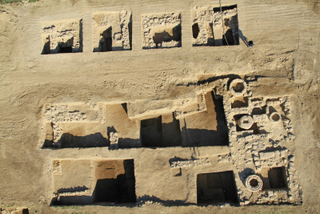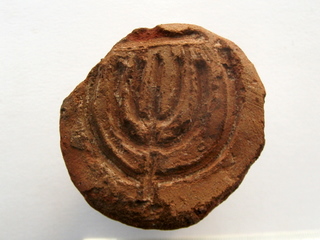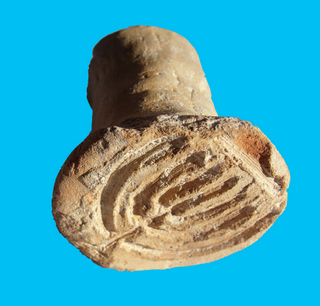Hizbullah Hiding Weapons under Buildings in South Lebanon
The UN Security Council assigned the UNIFIL [UN interim Force in Lebanon] to supervise the cease-fire after the Lebanon War of the summer of 2006. This was in addition to previous assignments, in all of which UNIFIL had failed.
Following the July/August 2006 crisis, the Council enhanced the Force and decided that in addition to the original mandate, it would, among other things, monitor the cessation of hostilities; accompany and support the Lebanese armed forces as they deploy throughout the south of Lebanon; and extend its assistance to help ensure humanitarian access to civilian populations and the voluntary and safe return of displaced persons. [here. This official UN site links to Sec. Council res 1701; in it see paragraphs 8, 11,14,15]UNIFIL was also supposed [paragraphs 11b, 11e, 14] to help the Lebanese army take control of southern Lebanon --an area under Hizbullah control before 2006-- and to help it prevent weapons not authorized by the Lebanese govt from entering the country. In fact, the Lebanese army does not go into south Lebanon [south of the Litani River] without Hizb permission, nor does UNIFIL travel freely in the country. Nor has the Lebanese army or UNIFIL been effective in keeping Hizbullah from bringing weapons into the country. These weapons, including long distance rockets that can strike anywhere in Israel, have been brought in and many of them are stored in southern Lebanon south of the Litani, despite the assurances of SC res 1701. Again, weapons heavy and light have been stored under civilian buildings, as occurred up to and including the 2006 war. The fact that weapons are being stored under buildings now supports Israel's charge of the same during the 2006 war.
. . . in a country in which the police and regular army are in part connected with Hizbullah and Syrian secret services, there is no doubt that --especially in the southern region between the Litani River and the Israeli border (an area where the [UN] blue helmets are stationed) not even the al-Qaeda cells present in a couple of Palestinian refugee camps near Tyre could succeed in carrying out attacks and moving through the territory without the Shiite militias [Hizbullah] and Damascus' agents being informed of it. The relations between UNIFIL and Hizbullah have progressively worsened in recent years due to the numerous weapons and explosives depositories hidden by the militiamen under the buildings, which have sometimes exploded because they were stored in a faulty manner or due to sabotage attributed to the Israelis. The latest episode took place in November in the sector assigned to the Italian contingent, bringing back to the forefront the substantial failure of UNIFIL which --based on Resolution 1701-- was supposed to disarm Hizbullah.In the original
This disarmament was never performed even if the command [of UNIFIL] at Naqoura attributes that task to the Lebanese forces that, in order to perform it, could ask for support from the blue helmets. In practice, no one has ever tried to take away weapons from the Hizbullah which --on the other hand-- has been reinforced [since 2006], restoring its rocket arsenals and even acquiring Iranian missiles capable of striking all Israeli territory, not only the Galilee. Two weeks ago, visiting Beirut, UN secretary-general Ban-Ki Moon, confirmed the need to disarm Hizbullah, asking all militias to give up their arsenals and saying that he was "concerned" by the Lebanese situation. [Il Sole-24 Ore, 28 January 2012, Gianandrea Gaiani]
. . . in un Paese nel quale polizia ed esercito regolari sono in parte legati a Hezbollah e servizi segreti siriani non c'è dubbio che, soprattutto nella regione meridionale tra il Fiume Litani e il confine israeliano (area di schieramento dei caschi blu) neppure le cellule di al Qaeda presenti in un paio di campi profughi palestinesi vicino a Tiro riuscirebbero a compiere attentati e a muoversi sul territorio senza che i miliziani sciiti e gli agenti di Damasco ne siano informati. I rapporti tra Unifil ed Hezbollah sono peggiorati progressivamente negli ultimi anni a causa dei numerosi depositi di armi ed esplosivi occultati dai miliziani sotto gli edifici, che a volte sono esplosi perché stoccati in modo errato o a causa di sabotaggi attribuiti agli israeliani. L'ultimo episodio è accaduto in novembre nel settore assegnato al contingente italiano riportando alla ribalta il sostanziale fallimento di Unifil che in base alla Risoluzione 1701 avrebbe dovuto disarmare Hezbollah.This article tells us several things:Un disarmo mai attuato anche se il comando di Naqoura attribuisce tale compito alle forze libanesi che per espletarlo potrebbero chiedere il supporto ai caschi blu. Nella pratica nessuno ha mai cercato di sottrarre armi agli Hezbollah che invece si sono rafforzati ripristinando gli arsenali di razzi e acquisendo persino missili iraniani in grado di colpire tutto il territorio israeliano e non solo la Galilea. Due settimane or sono, in visita a Beirut, il Segretario generale dell'Onu Banki-moon ha ribadito la necessità di disarmare Hezbollah chiedendo a tutte le milizie di rinunciare al loro arsenale e dicendosi ''preoccupato'' per la situazione libanese.[Il Sole-24 Ore, 28 Gennaio 2012, Gianandrea Gaiani]
1) The Hizbullah hides weapons and explosives in civilian buildings thereby endangering civilians --non-combatants-- and in violation of the laws of war. This supports charges that Israel made against Hizbullah during the 2006 war;
2) the Hizb has rearmed since the 2006 war, in fact with more weapons than before that war. The border with Syria has been porous since the cease fire in August 2006, enabling Iran to ship heavy weapons through Syria to the Hizb;
3) Neither the Lebanese army nor UNIFIL ever tried to disarm Hizbullah, although SC res 1701 called for disarmament of militias in Lebanon.
4) foreign states have shipped weapons, including heavy weapons into Lebanon since 2006, although this violates UN SC res. 1701. These states have principally been Iran and Syria;
5) UN Security Council res. 1701 has failed.
The Lebanese army was obviously not capable of performing such disarmament as called for, nor did it ask for help from UNIFIL for this purpose. Of course you probably knew all this but now it is confirmed by a serious journalist. Moreover, Ban-Ki Moon is "concerned." Sheikh Nasrallah, head of the Hizb, responded sarcastically, "This concern reassures us and pleases us." UN SC res. 1701 failed to stop Hizb rearmament, failed to protect Lebanese sovereignty and independence against Hizbullah and Syria, and failed to keep bring peace or advance peace between Israel and Lebanon.
Moreover, since US diplomacy [through Condoleezza Rice] was a major force in negotiating 1701, this was also a failure for US diplomacy, unless US diplomacy really wanted the results that have eventuated.
One more point. Nasrallah asserts: "We confirm that our choice is the way of resistance and the weapons of resistance." ["Confermiamo che la nostra scelta sono la via della resistenza e le armi della resistenza'']. This begs the question: What is Resistance anyway? Is Nasrallah's resistance, the Hizb's resistance, the same as that of the French Maquis in WW2 and of its leaders, such as Jean Moulin? In fact, Hizbullah opposes the independence of its own country, Lebanon, acting to assert Iranian domination over Lebanon. Furthermore, can anyone imagine Jean Moulin taking pride in murdering German civilians, including children, as Hizbullah [and Fatah and Hamas, etc] take pride in murdering Jews and Jewish children, as the Nazis did? Here we have a case of semantic subversion in which these Arab/Muslim terrorists try to steal the favorable Western view of the anti-Nazi resistance in WW2 in behalf of murderous, well-armed organizations essentially different in character from the WW2 Resistance and for purposes that are kindred to Nazi purposes.
- - - - - - -
Quotes from Moon and Nasrallah found in the Il Sole article cited above.
Labels: Ban-Ki Moon, Hamas, international law, Lebanon, Resistance, UN, UNIFIL






